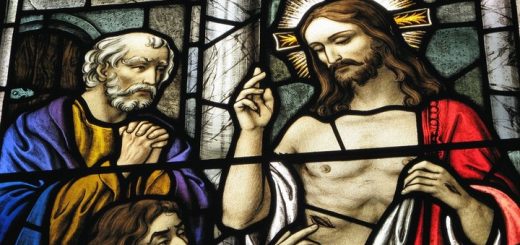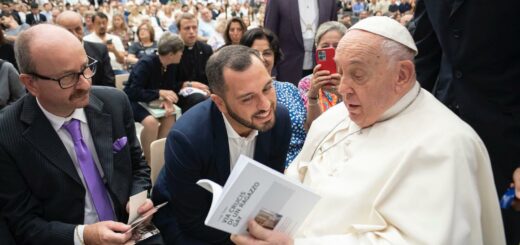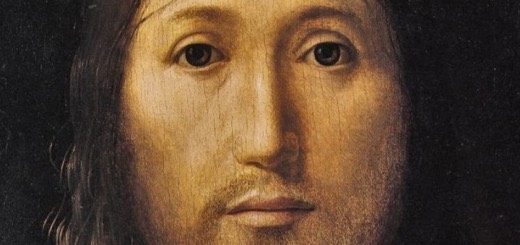Ave Mary e la Madonna ribelle che dice SI
Reflections by Massimo Battaglio
A youtuber friend, Alberto Camposs, a few months ago, published some video in which he held some beautiful reflections on the figure of Mary.
It started from the book of Michela Murgia "Hail Mary / And the Church invented woman” and launched some simple messages that fit perfectly in these days around the feast of the Immaculate Conception. The center of the speech is in fact the famous YES.
The surprising thing is that Alberto does not declare himself a believer and is always very critical of the history of Christianity. Yet, his reflections are certainly more current and useful than many sugar-coated nonsense that circulate during the Christmas period, both for better and for worse. We report the contents, which have a lot to do with others items offered by us in the past.
“Catholic religious education has had a great impact on the idea that we all have of women. The YES of women is essential for the survival of the patriarchal system. A false and instrumental representation of the figure of Mary has been used by the Church to shape a very distorted female archetype, claiming to be based on the episode of the annunciation.
But let's try to look at the story of the Annunciation of Mary from another point of view, namely that of Mary. Mary of Nazareth is one of the people who suffered the greatest wrong in this whole colossal story invented by the Church. Transformed into a passive, docile icon, she ended up representing a model of woman for Christians.
But Mary's YES, in fact, should be studied very carefully because there is a great distance from the patriarchal model imposed by the Church. Let's imagine sixteen-year-old Mary in the context of the time, hypothetically still the coward of a father who had power over her, certainly linked to a betrothed. Imagine this girl receiving a mysterious visit and being told that she will soon have a child. He's not getting an order, mind you, he's getting a request.
If we look at the stories told by the Bible, the Lord announces, for example to Abraham, that he will have a son. [But he does not announce it] to his wife Sara. Elizabeth's pregnancy is announced to Zechariah and not to Elizabeth. Instead, this mysterious visitor doesn't follow the rules. He's a nonconformist. It avoids all the steps of the Jewish tribal system, to turn to Mary, to this girl, and makes her the protagonist of the choice that concerns her most.
The angel of the Lord is non-conformist but Mary certainly does not have the same autonomy as him. A respectable girl, faced with a proposal of this type, a disconcerting proposal of becoming pregnant without knowing a man, would have refused, asking for more time to choose. Or he would talk to his father, to an older person, to the groom. Maria, on the other hand, is very careful not to do all this. And it is here that Mary beats the angel with her non-conformism.
Maria allows herself room for negotiation. He doesn't accept immediately, he asks for specifics, he asks: "how is this possible?". The angel explains patiently and Mary accepts with the famous “Yes, let it be done to me according to your word”.
Leaving aside the mysticism, this topic regarding Maria's pregnancy perhaps deserves a separate video. From a historical point of view, Mary was probably an adulteress. She had had intercourse with another person and became pregnant. We also have some writers of the time, Jewish and Greek, who claimed that Jesus was the son of a legionnaire called Pantera, who actually had a relationship with Mary.
But let's go back to Mary's YES. [It] sounded like a condemnation at the time. An unjustified pregnancy, before going to live with the groom, meant stoning. Even the silliest of girls would have gone to her husband or father to confide at this point. Maria, on the other hand, leaves for three months with her cousin Elisabetta, the only one who will realize that she is pregnant.
When he returns home, Giuseppe obviously notices it. And only the man's good heart and a premonitory dream convince him not to condemn her. From that moment on, Giuseppe becomes one of the greatest protectors of the woman and her child. But in all of this, Maria has always done what she wanted, in the times and ways that she decided, forcing everyone to say yes. If we want to make a connection, it is in this sense that God "overthrew the thrones", destabilized the patriarchal situation between man and woman, making a young girl the greatest accomplice of human Salvation.
Mary's name will be known by many and above all her YES, which is a YES more of rebellion than of submission. With such a mother, it is not surprising that Christ, throughout his public life, paid attention to women that was always very unconventional compared to the context in which he lived.
There is nothing like the Scriptures, capable of revealing how false the idea that everyone wants to give us of Mary as a docile, meek and submissive woman, who would then have to become a stencil for all respectable women.
It can also be seen clearly in other contexts, such as the removal of certain parables, the mystifying process that pushed the Church to transform Mary from a free and courageous girl to a pious, humble and silent woman. In the Bible there are dozens of female images that have been deliberately ignored in the processes of building the Christian imagination. This symbolic mutilation deprived women of representation. It deprived them of the right to recognize themselves in the image of God.
After this beautiful story let's draw some conclusions. It remains difficult for many women to break down the conditioning of decades of consent education. Man has always been encouraged for generations to create his own character. The girls, on the other hand, were always taught obedience, to please, to be compliant. The idea was inculcated that saying no was rude and that refusal was pride or presumption.
Women are raised to believe they are a consenting species. But this belief also ended up taking root in men themselves. For many, if a woman says yes she means “maybe” and if she says “maybe” she means “yes”.
Mary, for Christianity, is the woman of YES. This woman's affirmative response represents the Big Bang, the redemption of Eve's no, the mother of the Savior. Who better than a woman could teach all other women how to behave? Mary's supremely free YES, when the angel revealed the news to her, was presented with the spiritual sublimation of all the YES of believing women. And it doesn't matter that these YES are much less free. YES to getting married, YES to sexual relations, even unwanted ones, YES to pregnancies, all and regardless, YES to spiritual obedience to the priest and to family obedience with brothers and male figures.
Through the distorted representation of YES, the Church gave the impression that female dissent, the contrast with man, the freedom to define oneself by anything else that is not affirmative, was in contradiction to the highest project of salvation, the project that God had for the world.”
Yet, as Alberto has well demonstrated, Maria's YES meant something completely different.






